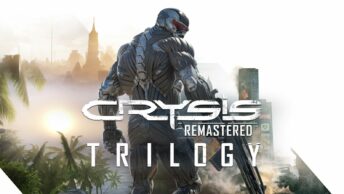What happens when you combine a Western Style Role-Playing game with a Real-Time Strategy game? Maybe not thunder and lightning but you do get a [Spell]Force to reckon with!
Type: Single-player, Multi-player
Genre: RPG, Strategy, Base-Building RTS
Developer: Grimlore Games
Publisher: THQ Nordic
Franchise: SpellForce
Release Date: 28 May, 2019


Reviewer’s Note
It’s been quite some time since I had the pleasure of playing a base-building Real-Time Strategy game as they are starting to get a bit rare these days. The Real-Time Strategy genre still exists, don’t get me wrong, but the base building element is often left out entirely, or is quite limited or basic. When I saw SpellForce 3: Soul Harvest had base building, I just knew I had to play it since it’s so hard to find a decent base builder these days. This was actually my first time playing a SpellForce game and I am regretting having played it. I admit, going into it I wasn’t really expecting that much from it, due to the base building element being a secondary feature in an otherwise generic-looking Western Role-Playing Game, but I am happy to say that my preconceived notions of the game were completely baseless. Despite being in a position to write this review a week ago, I simply had to press on! At this point you are probably asking yourself, why do I regret playing SpellForce: Soul Harvest if it sounds like I am going to rate this game a Save? The answer is now I just have to go back and play the rest of the Series. I enjoyed it so much and there are so many titles therein to catch up on.
Gameplay
As mentioned in the preamble, this game successfully combines the classic Real-Time Strategy (RTS) elements into a Western Style Role-Playing (WRPG) game. The very first thing you are faced with is the tried and true WRPG Character Builder. There are a number of options to choose from, including your gender, your overall looks, your starting clothing and your choice classes. You actually get to choose two skill trees to progress down allowing you to make any kind of hybrid character you want. I personally went with Druid and Necromancer, although I found myself enjoying the Druid powers more (and wishing I had picked something other than Necromancer because one of my companions is also a Necromancer and he is way better at it!) Your classes help define which attributes are important to you and also impact what kind of gear you can use. As you move through your skill trees, some of the abilities will have specific attributes that boost them. My character mostly uses Willpower with Intelligence as a secondary. This means I mostly have to wear robes and use wands. With a little constitution boosting, I am able to wear lighter armors and with some dexterity or strength I can use other weapons as well but the power of my abilities would suffer if I branched out like that. As you wander around the world chasing after the next big quest you will be accompanied by up to four units. When first starting out, nameless mercenaries will happily join you but as you progress named heroes will also start looking for a spot in your formation. There really isn’t anything different between the mercenaries and the named characters other than the named characters will often chime in with extra flavor dialogue during conversations with quest NPCs. Characters not currently in your party, but available to you get experience even if they are never used and new ones joining you come in at the same level as your hero. These non-player heroes and mercenaries will come with their own blend of classes, so it really boils down to who has what you want for the mission at hand.
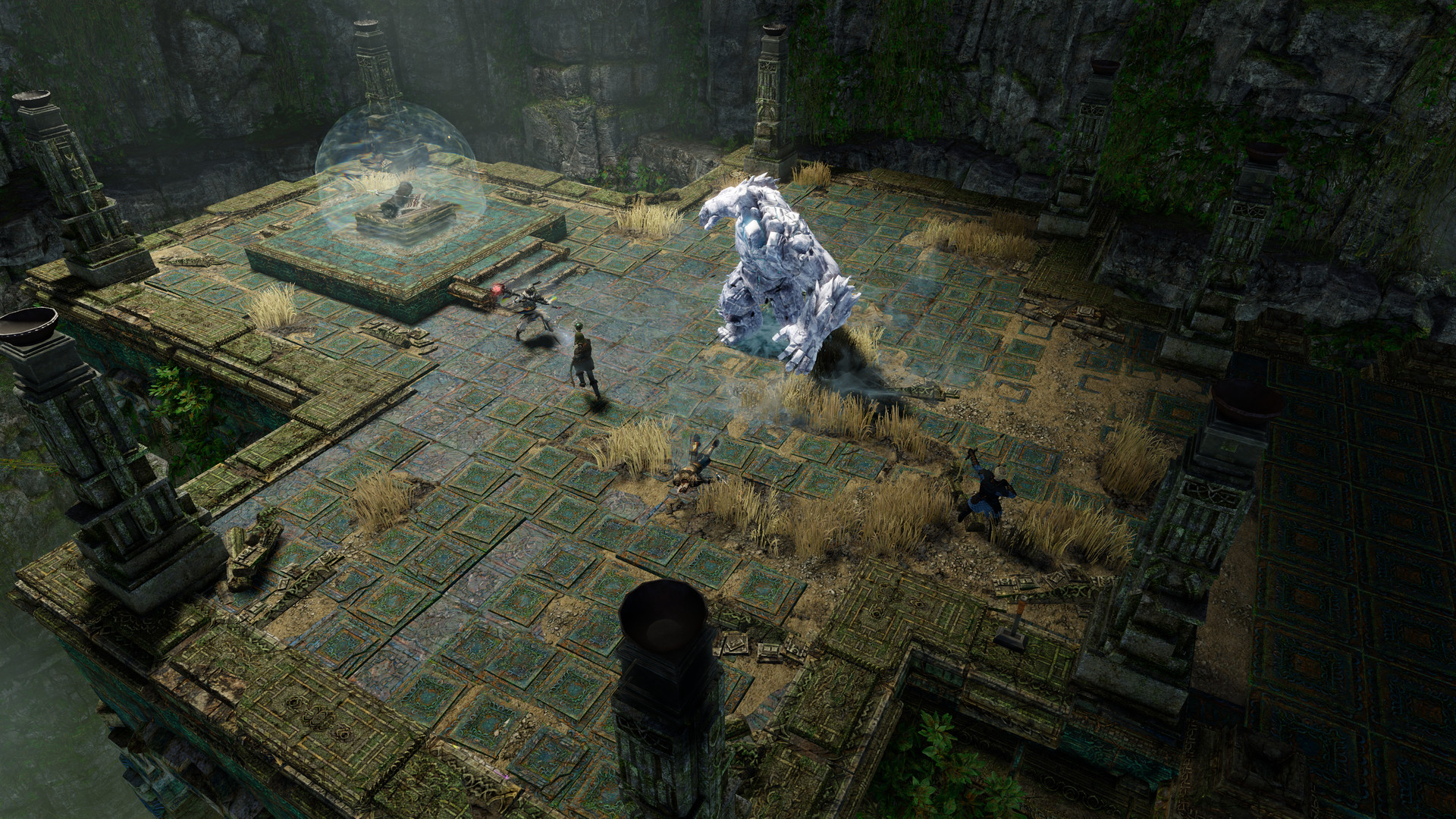
Dungeoneering and Combat
Combat in this game is just like in your typical WRPG. You kit out your heroes with the weapons and armors that best suits their character archetype and then head off into a dungeon or other such environment looking for trouble. Different classes have different strengths and weaknesses, such as a fire-based attack doesn’t hurt fire elements but does extra damage to ice elementals, and a holy/light attack hurts the undead more than a normal attack would. So, depending on the enemies you are encountering you may need to run back to the world map and regroup with a more suitable party if you are finding it a bit difficult. These dungeons are also where it starts getting more interesting. They come in two distinct flavors. There is your typical WRPG where your merry band of misfits fights their way through the area until they reach their destination while resolving any side-quests that happened to tickle their fancy on the way. That’s all fine and dandy, but it’s pretty common nowadays. The other is what makes SpellForce more unique. Instead of just your team of four working their way through on their own, they may gain the ability to build a base. By building the various structures, you gain the ability to start producing and upgrading units. Some units and buildings are locked initially but over time you will gain access to them. It doesn’t just stop there though, the base you get to build is themed to the area you are in. If it is the Humans who are letting you build a base, you get human structures and units. For Dwarves, you get Dwarven ones, same goes for the Orcs, Elves and Dark Elves too. You get the idea! Not only can you build a base, you can build various different bases and have access to a bunch of different units. While the core concepts of the units are mostly their same, each faction does have its own unique units and variations on the standard unit types. Of the various factions, the Dark Elves had the most unique unit and structure. When any unit dies in combat, or really any of your combat units can be sacrificed if you are feeling particularly evil and impatient, their soul can be collected by a Soul Harvester and sent back to your base for processing into a better unit. This means that even if you lose a battle, you might still win the war. Speaking of losing the battle, if any of your heroes fall in combat, they can either be revived by a surviving hero or after a brief cooldown respawn back at a fast travel gate. This doesn’t mean you can just let your heroes die easily, there is a limit to the number of times your heroes can die before it is game over (unless you are on the easiest setting).
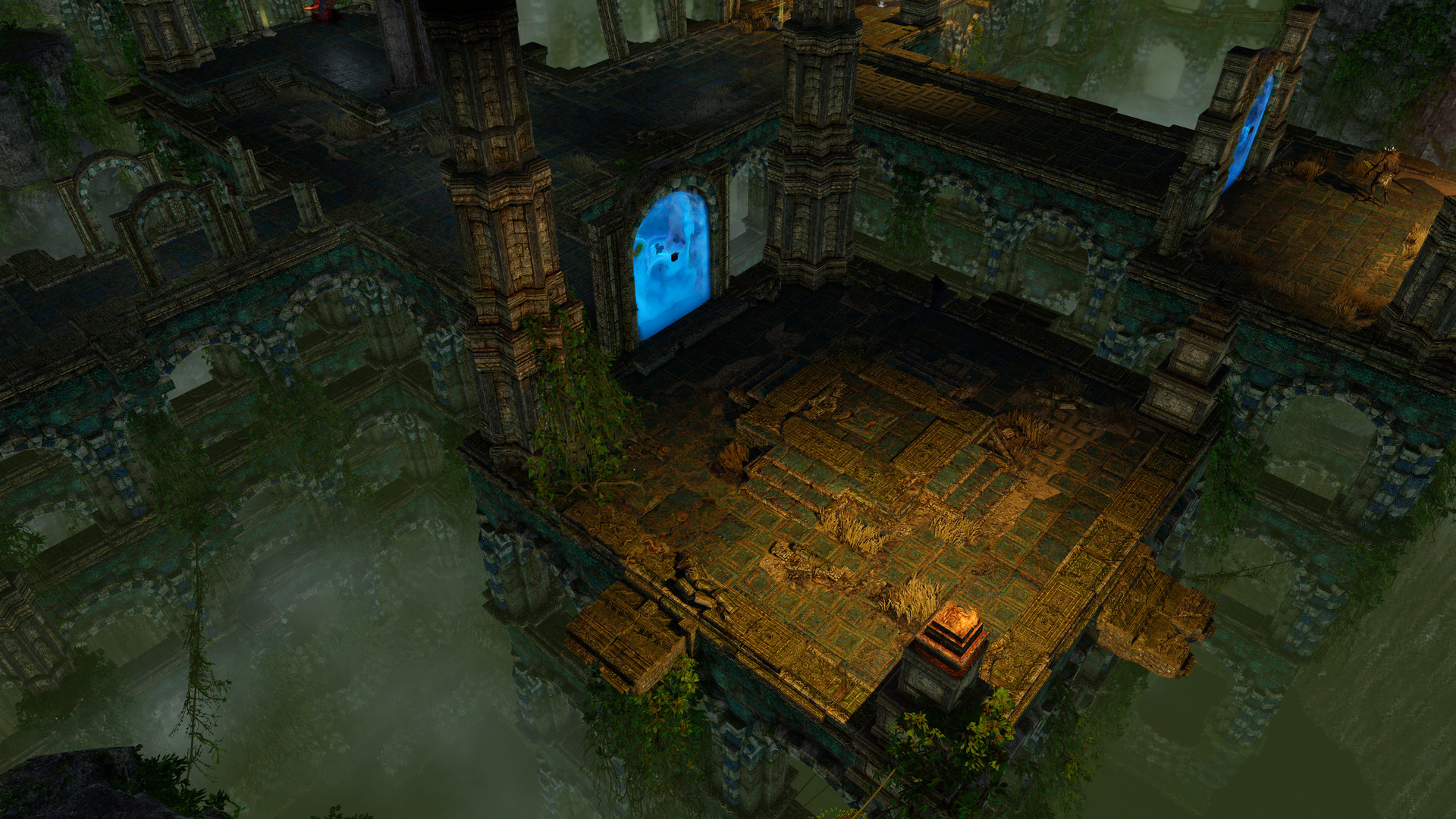
Combat is in real time, regardless if you are commanding a base or not. You cast your spells, perform your attacks and any other tactics you wish to apply all while the enemy is doing the very same. There is no pause in the action, no time to think, just act! You can slow time down if you use the action wheel, which lets you chain together a few moves, but even then, time still progresses slowly. Usually you are not isolated to just one enemy either, you can very easily find yourself being swarmed, but thankfully, depending on how you have grown your characters, you will have access to plenty of area of effect attacks to handle the enemies. When you are playing the RTS style maps, once the battle is over, it doesn’t mean you have won the war. You might have defended yourself from the enemy, or you might have captured one of their outposts, but the enemy will not give you a lot of time to rest and lick your wounds. You will need a constant stream of reinforcements if you want to hold your precarious position or if you want to completely drive the enemy out of the area. This means you need to have a strong economy with enough workers collecting the raw materials you need to expand your bases and your military.
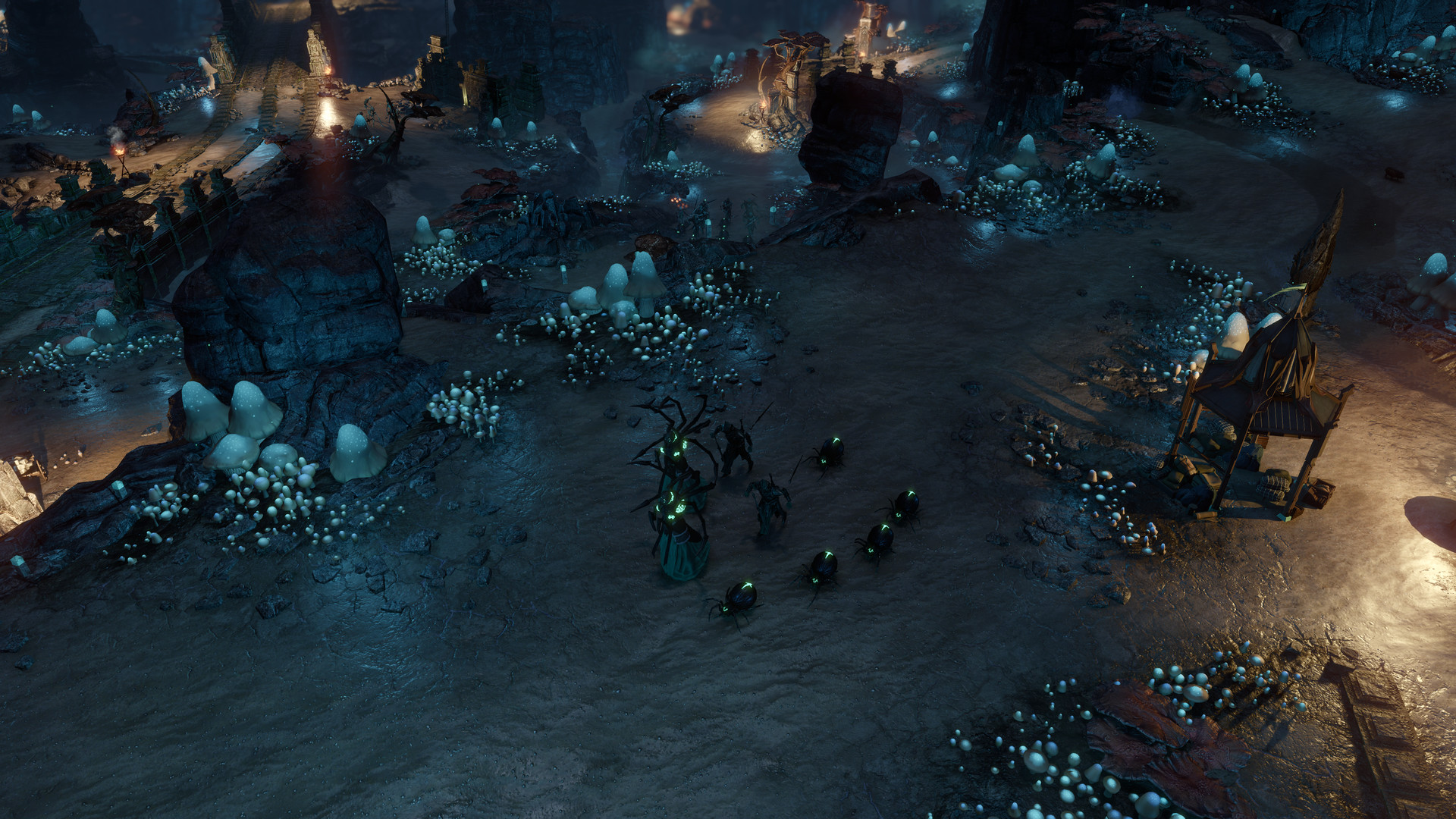
Economy and Base Building
In my humble opinion, no proper Real-Time Strategy game is complete without base building and harvesting resources. There are plenty of resources available to harvest, with each race having one race-specific resource to collect along with the common resources. Some materials will need refining before you can actually use them, so you will need to ensure you have all the necessary tools in place if you intend to use your resources. In order to prevent you from making one massive base, you can only have a certain number of workers at any given base. Also, each base will only have access to a limited amount of harvestable resources and will likely not even have access to every type of resource. This means that if you want to have proper production and harvesting with peak efficiency and have access to all materials, you will need to expand your control to the neighboring areas and build outposts. Outposts are basically like setting up a new base entirely. While they can share the collected raw resources, they do not share workers. This means that the new base will be able to produce its own workforce to run the buildings surrounding the outpost. The one issue with expanding your territory is that you will now have more territory to defend. When you are in a single base, it’s pretty easy to defend it with a standing army, but once you have multiple outposts, your army starts getting spread thin, especially if the enemy attacks two separate outposts simultaneously. You can build defensive structures, but they take workers to operate which diverts them from more meaningful tasks. Plus, as you harvest trees in the area, you may end up exposing more of your base leaving your previously well-placed defensive structures to standing easily avoidable by the enemy in the middle of nowhere.
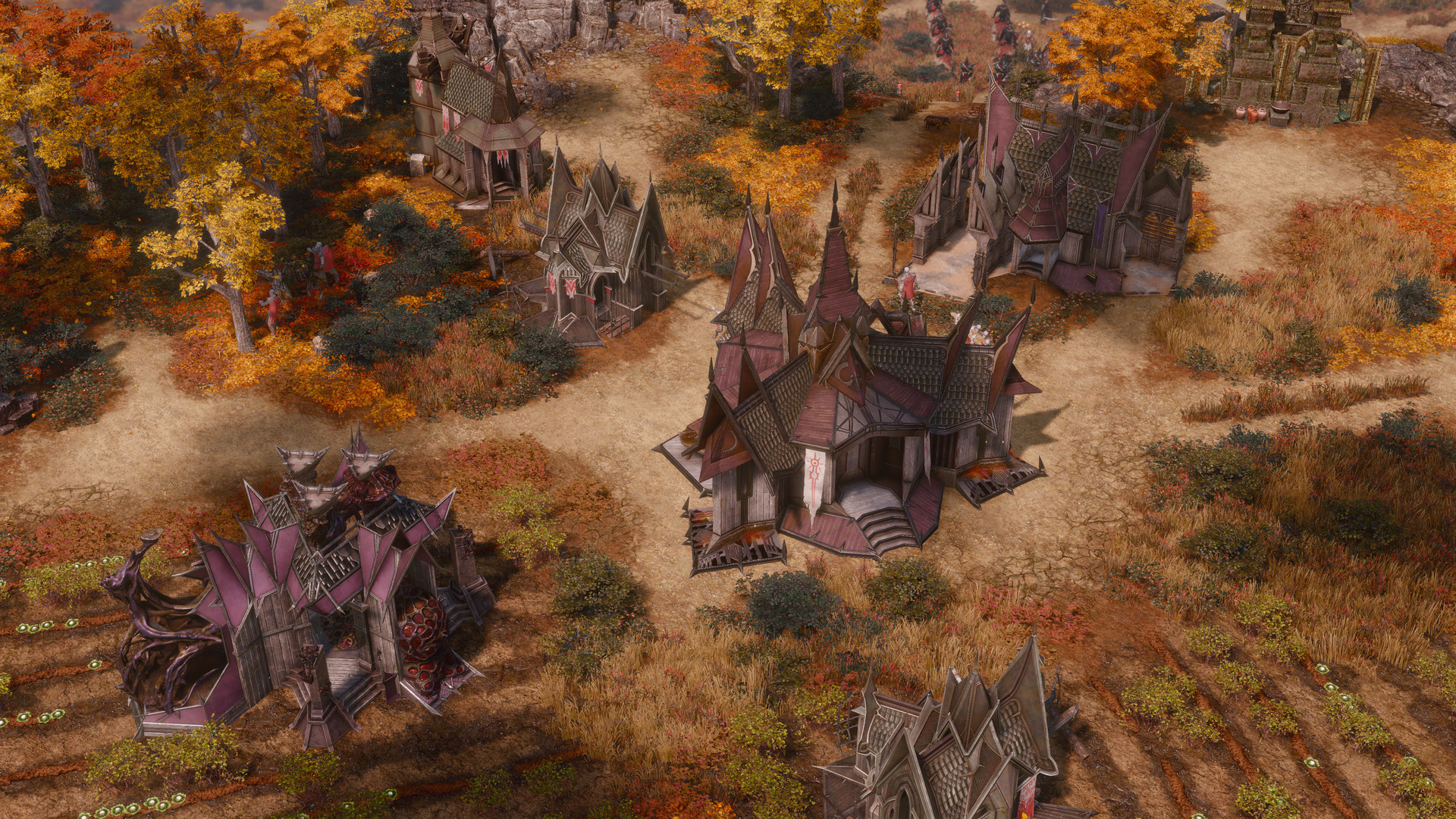
There are plenty of buildings and units to choose from as well as a tier upgrade system to contend with. You are able to upgrade your technology level of your main base as well as your outpost’s level. Upgrading technology levels gives you access to higher-end buildings and units, whereas upgrading an outpost gives you more workers and therefore allows you to operate more structures around the outpost. Eventually once you tech up enough you will be a force to be reckoned with, but there is a very good chance that turtling in your base until you are fully teched-out will not go well for you. The funny thing is, despite being able to produce all units, I found myself often relying on the most basic units. They didn’t need a lot of resources to produce and were good to swarm the enemy with. I mean sure, I sent countless people to their death just to capture an outpost I didn’t even need, but they could die comfortably knowing that they were not even missed when they died due to how replaceable they were. Plus, as I mentioned, I had some necromancy so my fallen soldiers could rise up and keep up the good fight. With that said, the higher end units were definitely more versatile, but they were harder to produce and replace.
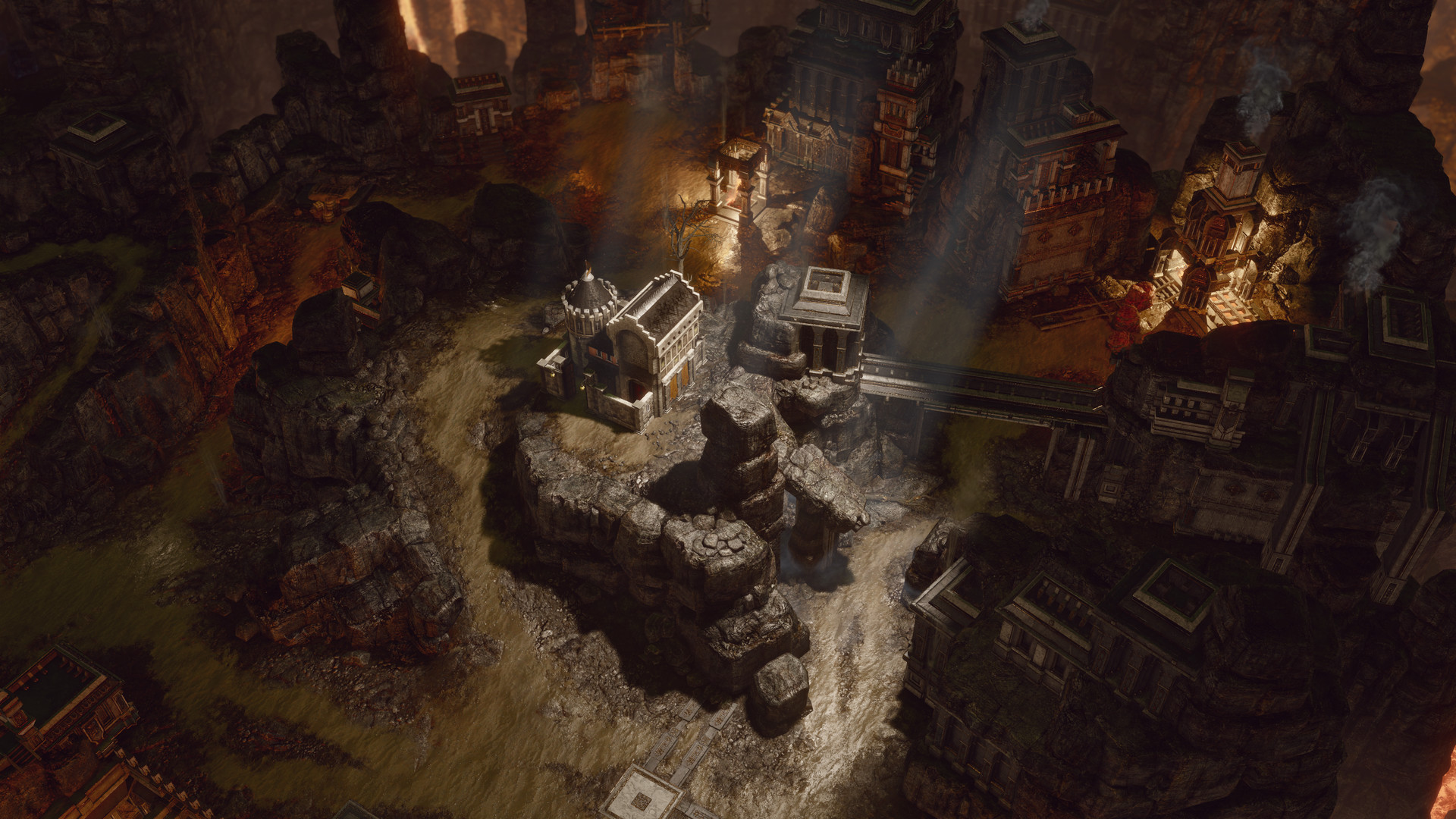
Missions
Everything in this game is mission-driven. There are side quests and main quests. Side quests are of course optional but they sometimes give you a worthwhile reward and often times they don’t involve you going out of your way too much. You can really tell that this isn’t the first game in the series and that it is meant as a continuation of an existing saga. Both the main quest as well as the side quests often refers to events and factions that sound like they have some significance but it sounds like it is referring to something more than just game background lore and more like you have seriously missed something by starting with SpellForce 3: Soul Harvest rather than even SpellForce 3. But I digress, missions do a good job of driving the story and explaining the motivation behind why things are being done. Depending on if you have access to the base building or if you are doing a squad-based mission change the feel of the game itself. As mentioned, when you are base building, it feels like your typical base build game with your standard base building game objectives of whipping out the enemy forces. Sometimes you get to do a bit of dungeon crawling still when your heroes are only permitted to enter a cave but, for the most part, it’s army versus army. When you are doing the squad-based missions, it is you working your way through the various levels of the dungeon, finding keys, defeating bosses, or otherwise playing a standard dungeon crawler. Regardless of the style, there is always tons of loot scattered around for the eagle-eyed adventurer to collect.
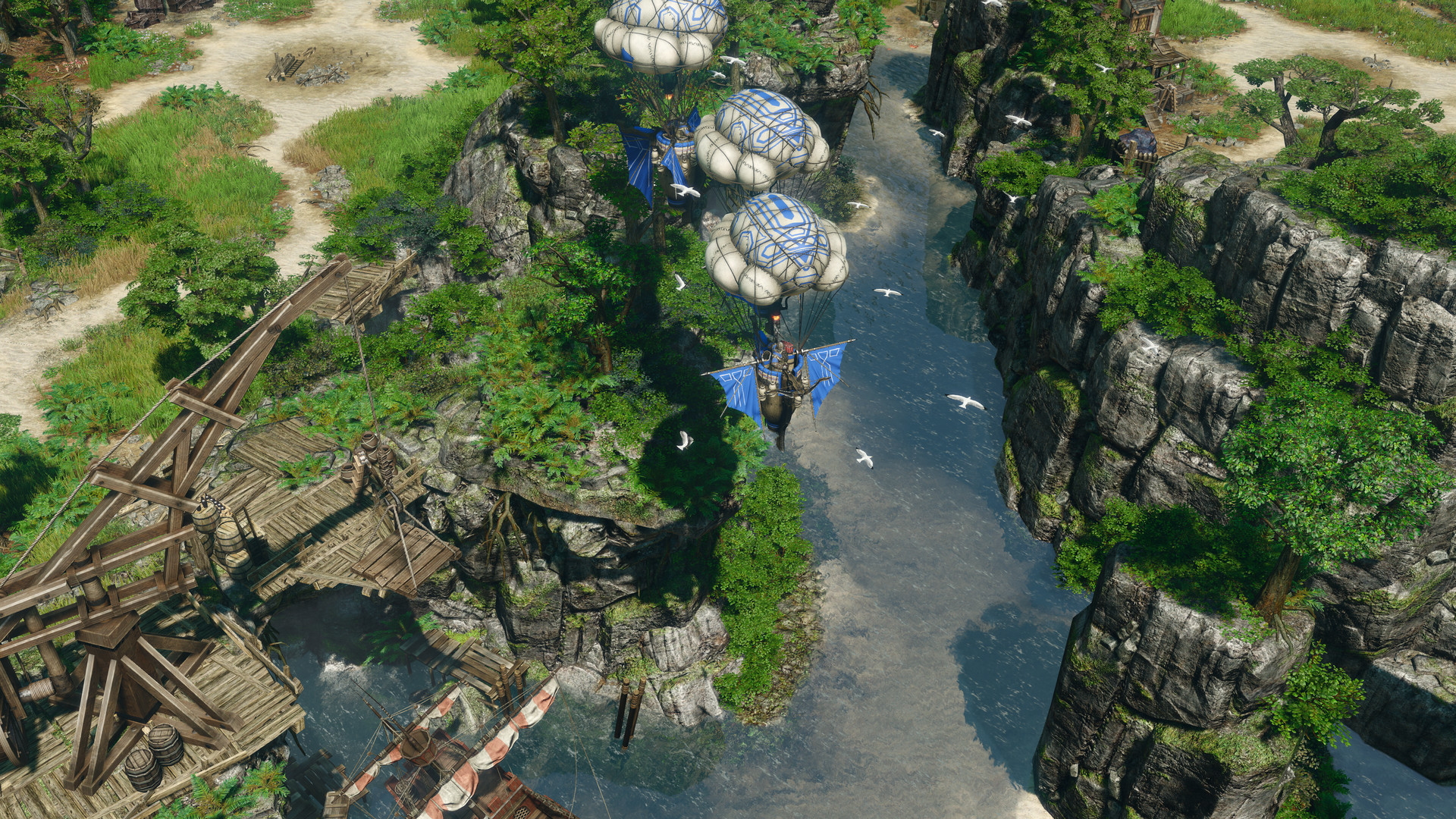
WRPG Elements
While I have touched on these already, it’s time to talk about them in a little more detail. Weapons and armor all have stats requirement before you can equip them. Gear also comes in various levels of rarity as well. Rarity levels appear to mostly impact the gear’s own statistics as well as potentially adding extra functionality to it as well such as increasing the wearer’s health. It’s your standard WRPG system and implemented quite well. There is plenty of gear just laying around and even more available in the shops. Despite the fact there was tons of stuff to loot, I always found myself short on cash leaving me to have to rely on wearing whatever armor I find laying on the ground and any weapons I can metaphorically pry from the hands of corpses. With your stats being a limiting factor, and only getting a single stat point every other level you gain, I usually ended up having a ton of useless equipment. While you can drink a potion blackout and wake up to having all your stats being reassign-able, your classes still define how you should spend your points. When I built my Druidic Necromancer, I had rolled myself a Willpower main feature, with Intelligence being my secondary and Strength being an afterthought third place. This means that I am a cloth wearing staff user. This would be all fine and good, except that better than me Necromancer I mentioned is also a staff user (due to having the same skill tree for Necromancy, and having a supporting magically inclined secondary as well). Of the other two named characters I have, one looks like she should be pure strength-based, a mighty dwarf, but her skill trees do not support that either. The other lady I have is an archer by default. This means that all those lovely strength-based melee weapons and all that nice heavy armor just sits there and rots as my team squabbles over who gets to wear the new armor and who gets the blood-stained hand-me-downs. If I was to start over, I would build a strength-based tank character so that my squishier ranged friends would be able to shoot from afar as I protected them. I’d then be able to wield all the lovely shiny loot I found.
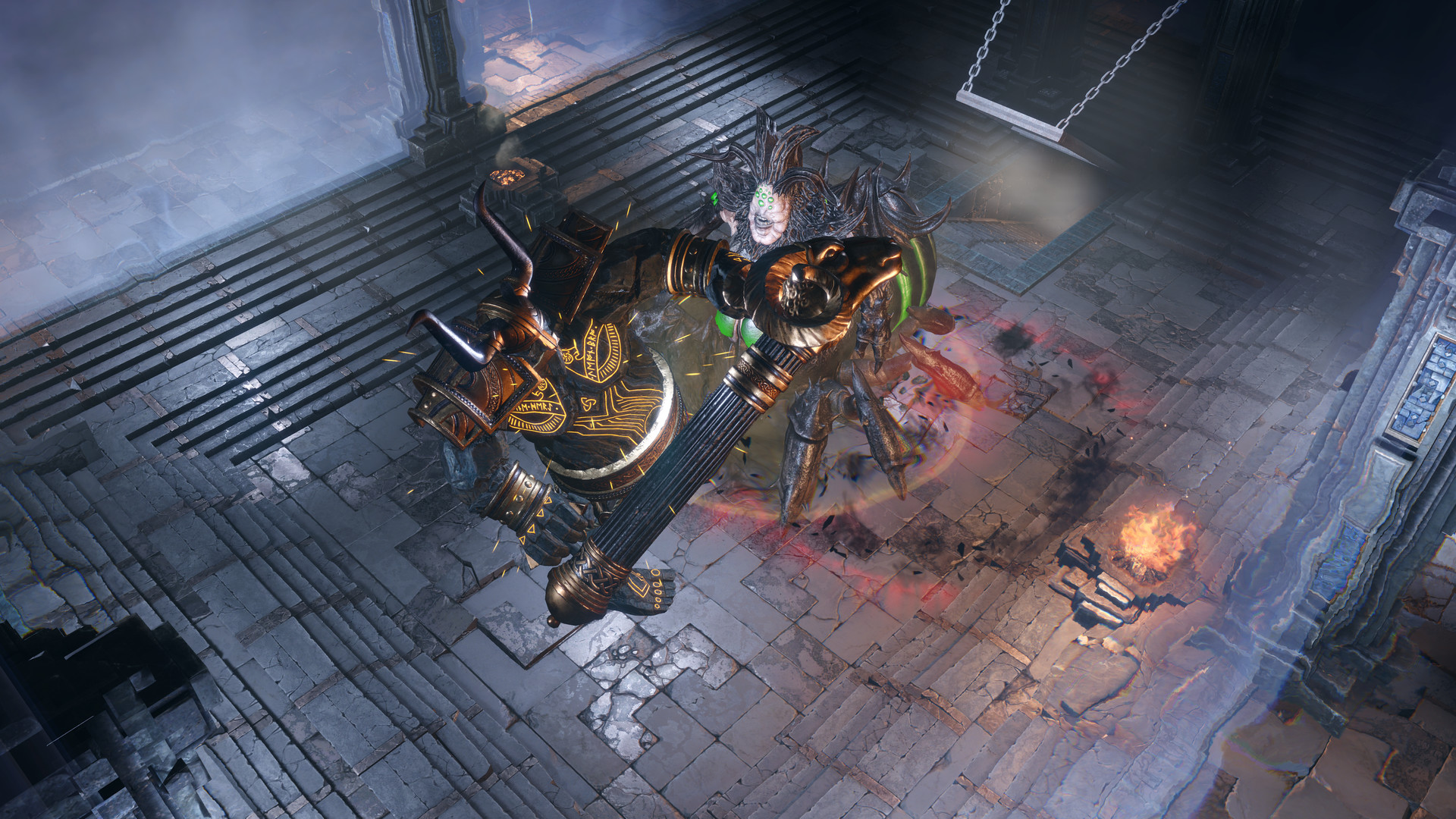
Graphics
Graphically, this game looks great for its genre. The system I was playing on isn’t the newest system but it was perfectly capable of running it at maximum graphics. Sure, after a long session my CPU warned me that it was overheating, but that is more to do with the fact it is still rocking its factory cooler rather than something with a little more oomph. I did tone the graphics down a bit after that but I didn’t really notice much of a difference. The character models are detailed enough to make them interesting. They actually are shown wearing the various bits of gear you give them, rather than just being a generic unit. The various enemies all have their charms as well from the spiders in the dungeon to the beetles in the fungal forest to the humanoids. The Dark Elves, for example, look like if they stepped out into the sun they would burn to a crisp with their nearly pure white skin. The dwarves look stocky and strong. Even the orcs look suitably orcish! Even the buildings look good. While they all follow the common theme of the race they belong to, it’s very easy to identify one building from another. The Dark Elves probably have the most interesting looking builds of the bunch and were ultimately the faction I liked best simply because their unique resource was plentiful and didn’t require you to hunt it down on the map. I remember searching for a Moonsilver mine when I was with the Dwarves and having to find that aquafer for the Humans, but for the Dark Elves I just killed a bunch of my scouts and then raided the enemy and slaughtered some of them and soon I was swimming in souls! The environments vary greatly depending on where you are. The underground dungeons look suitably dark, dank and cold feeling, whereas the forested area looked vibrant and more alive. There are plenty of environments to transverse as you progress through the game.
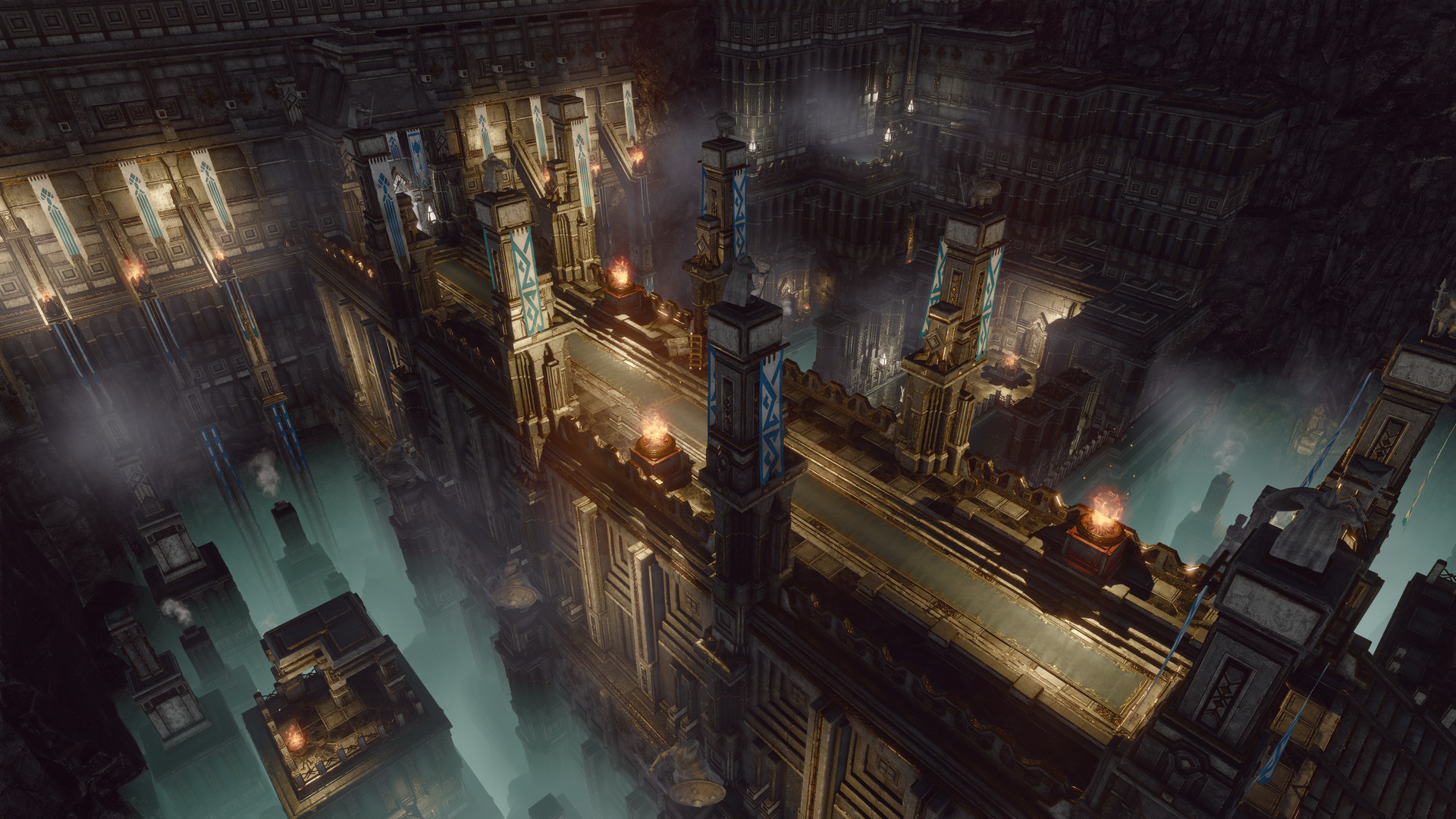
Sound
This is one of the few games of this genre that are fully voiced. Even the minor secondary dialogue options are spoken by your character and considering how much talking there is in this game, that is rather amazing. Especially when you think that it lets you choose between a female or male character at the start of the game so everything would need to be recorded at least twice. All the important characters you encounter speak to you as well. This game must have had a pretty big voice actor budget or else the team all chipped in their voices too. Some of them did sound like they were using a microphone to record their lines and didn’t sound completely natural but, for the most part, they all sounded good. The thematic background music keeps it interesting without being too overbearing or obnoxious. It goes just far enough to set the mood, but just lets itself just blend into the background. If you play with it muted, you definitely will miss it, but if you play with it on you may not even notice it. That’s the way background music should be. The sound effects in the game, while repetitive, are needed and really help with the immersion. Opening an old crate in a musty old dungeon just wouldn’t be the same without the creek of the old wood and metal as it is disturbed from its long slumber.
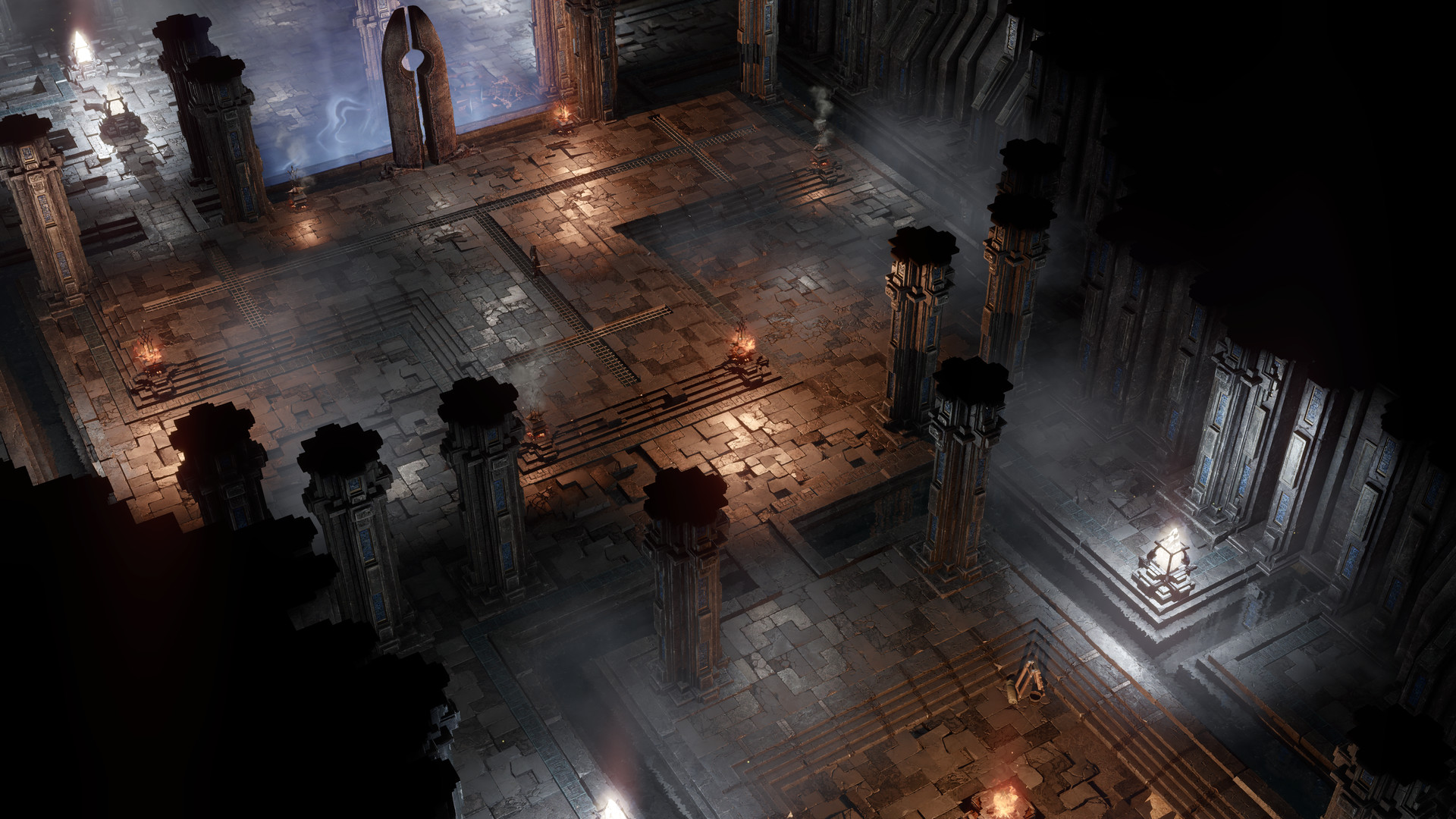
User Interface and Controls
If you are the kind of person who likes hotkeys and radial action buttons, then this game is for you! Despite what looks like a complicated game on the surface is made far easier by placing your favorite skills on the action bars. While you can point and click either on the radial buttons or on the action bars themselves, pressing the associated hotkey works even better. While this game is fairly heavily menu-driven, they are all laid out in such a way that it is easy to find what you are looking for. One function that I found to be handy was when interacting with merchants. The character talking to the merchant will see gear as either redded out or normal looking. The red ones are ones that the current character cannot equip, and highlighting the equip-able ones will compare it to what they are already wearing. You can then use the arrow by the character’s portrait and check the next character in your party to see what the vendor has for them. I will admit that the controls did have a bit of a learning curve for me because I am so used to using WASD but the game prefers the use of the arrow keys. Other than the occasional fall back to WASD, I adapted to the controls fairly quickly. Character movements are all controlled with the mouse. Pointing and clicking your way to success.
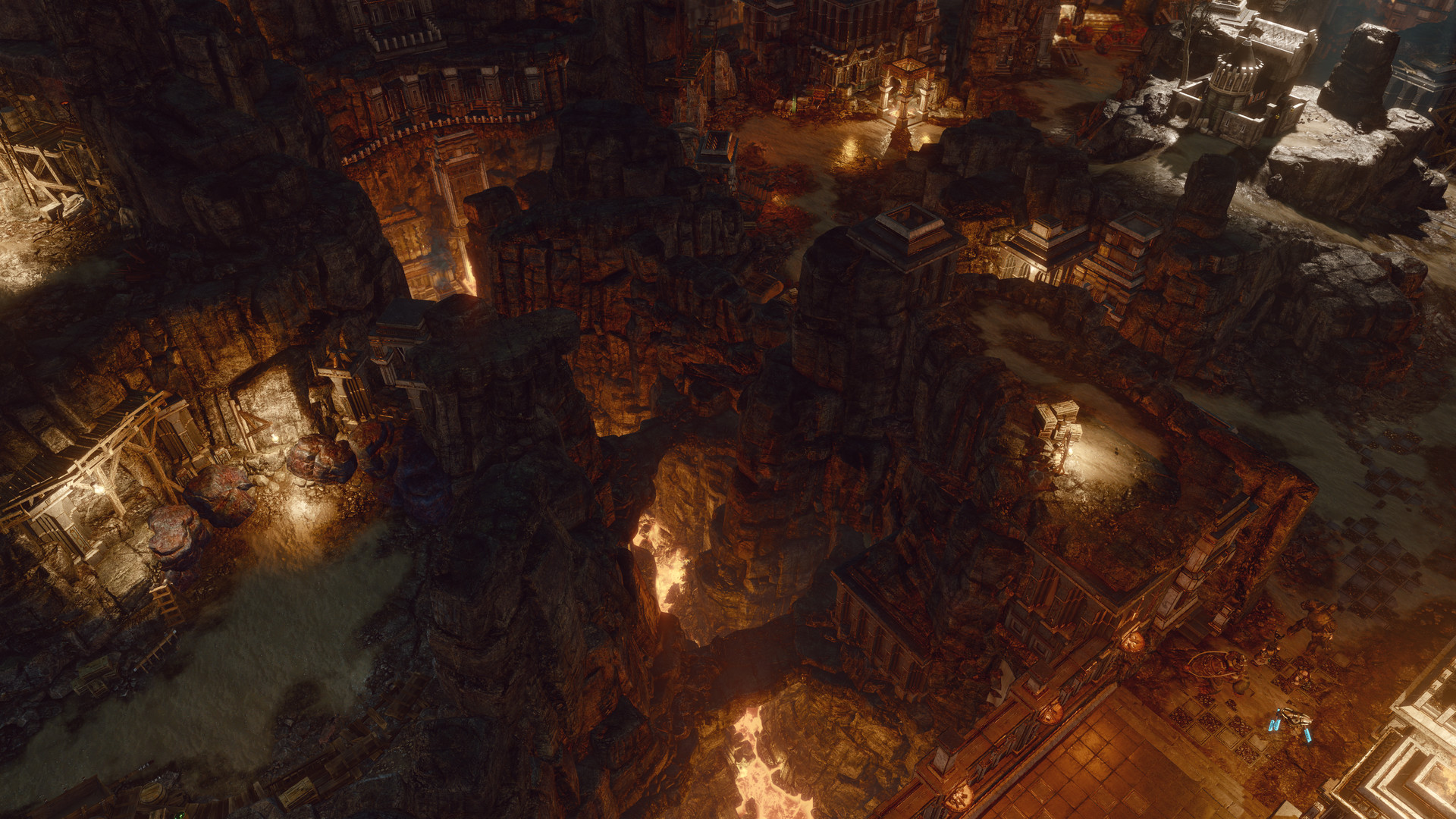
Verdict
So, should you pick up SpellForce 3: Soul Harvest? Speaking as someone who has not had a chance to play SpellForce 3, I can say that it does feel a bit off playing Soul Harvest first. The game itself is great, and you can just take all the stuff they say as establishment lore rather than references to previous games, but it feels like it would be more enjoyable had I played the previous titles first. With that said, it is self-contained enough that you can still enjoy it even as your first SpellForce experience. If you were a fan of SpellForce 3, I can’t say how it compares to it, but the videos I have seen make it look roughly similar. It feels like it is a true expansion pack to the game that adds a few new features and a new campaign but otherwise stays relatively true to the base game experience. If you are a fan of base building RTS games, then this is one that you may wish to check out. While the base building isn’t a central focus of the game, it is still very well done. There are plenty of buildings and units to deal with as well as a number of upgrades to perform. Added to this is that there are multiple races, each with unique elements to them which makes this way more than just a bare-bones base builder experience. If you are a fan of the Dungeon Crawling WRPGs, then you will most likely enjoy this title. The base building elements don’t really get in the way of your exploration although it can interrupt the flow of your standard search a dungeon, kill the boss, go on to the next rinse and repeat formula that you may be used to. It does add an extra layer of interest to the game. The game’s multiple difficulties allow for players of all skill levels the ability to experience the game without feeling too overwhelmed or underwhelmed. All in all, it’s a Save in my book and series I intend to revisit the next chance I get.







